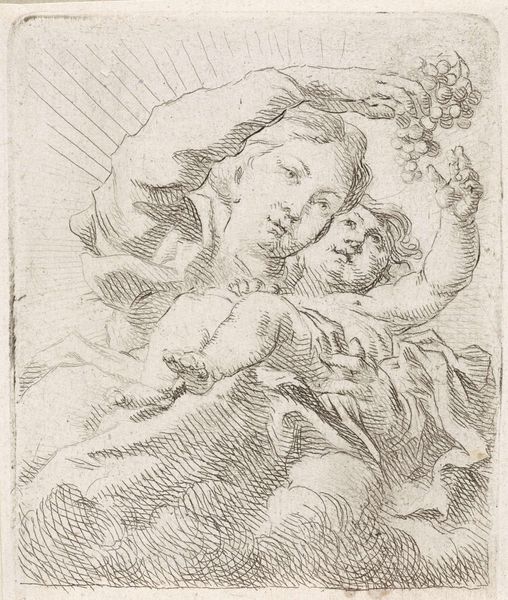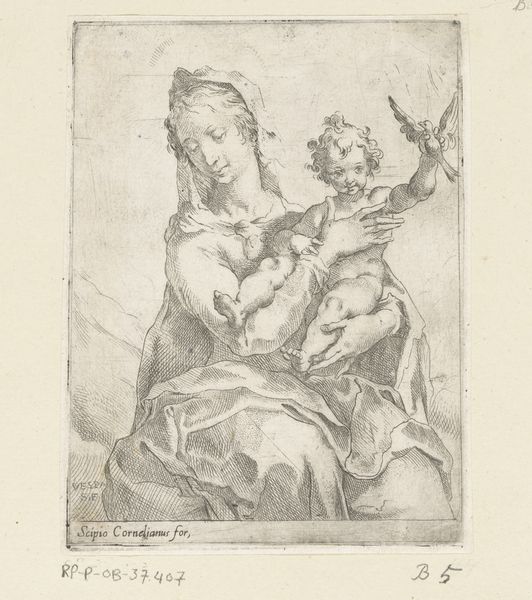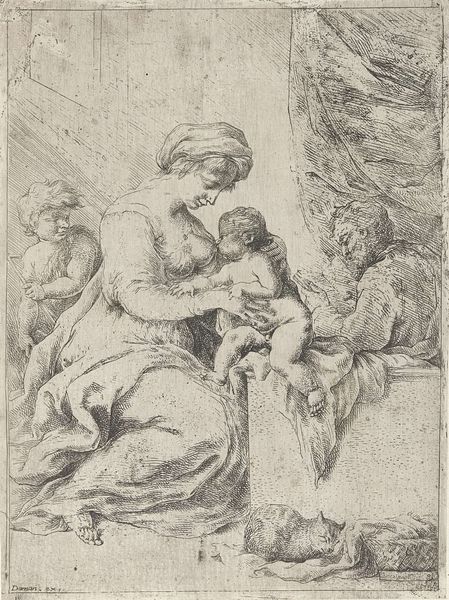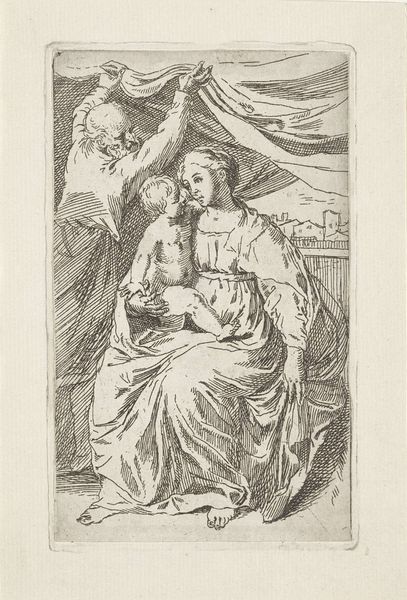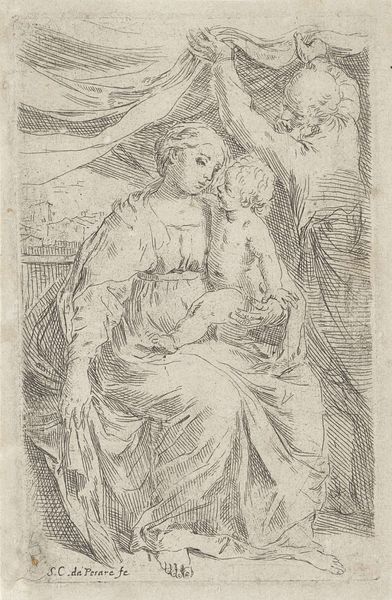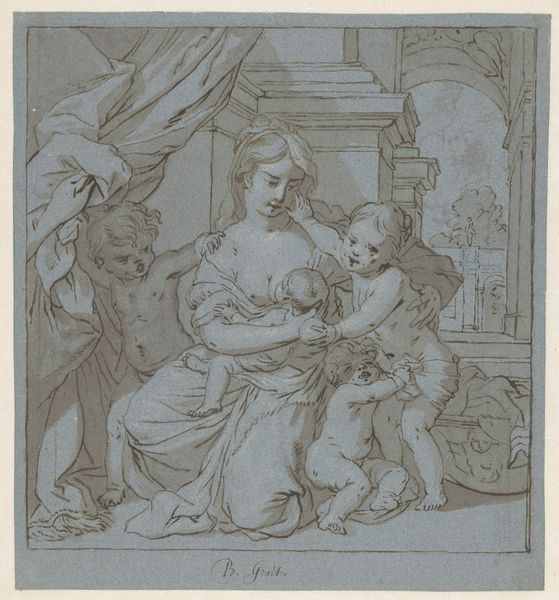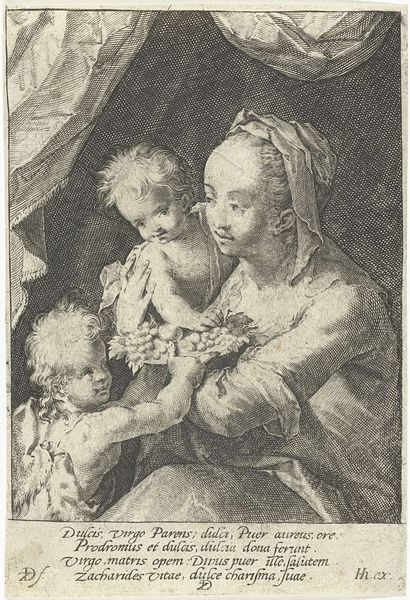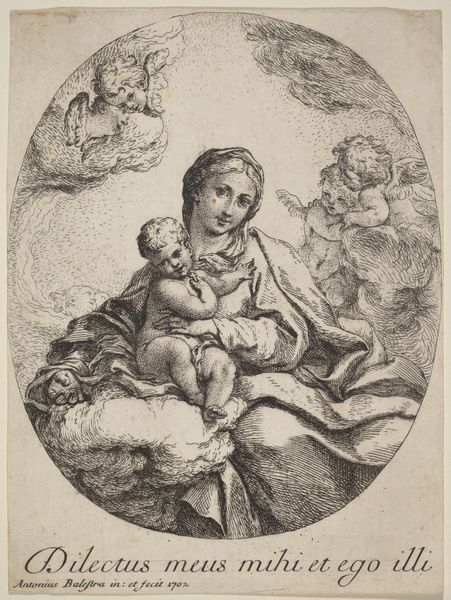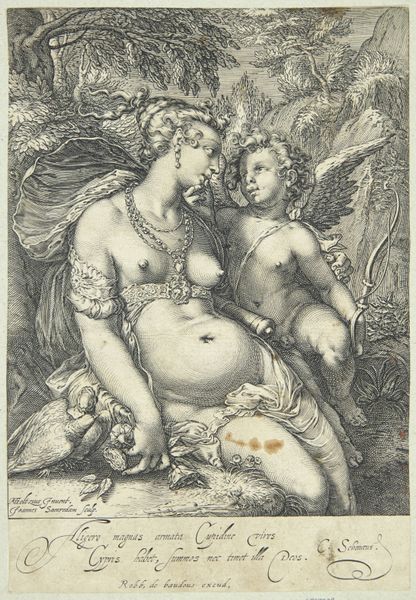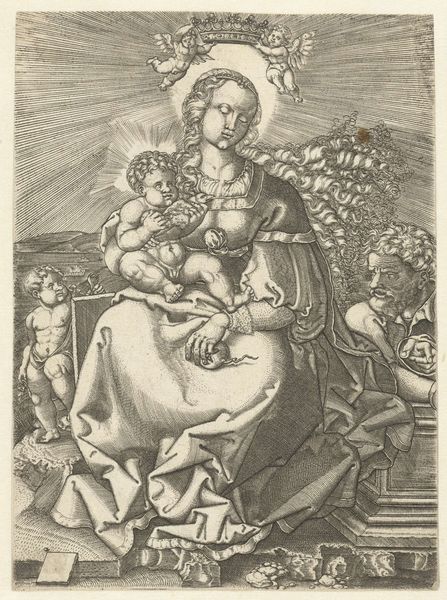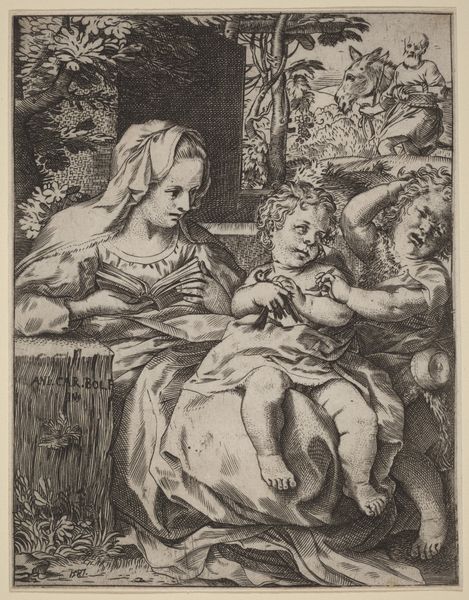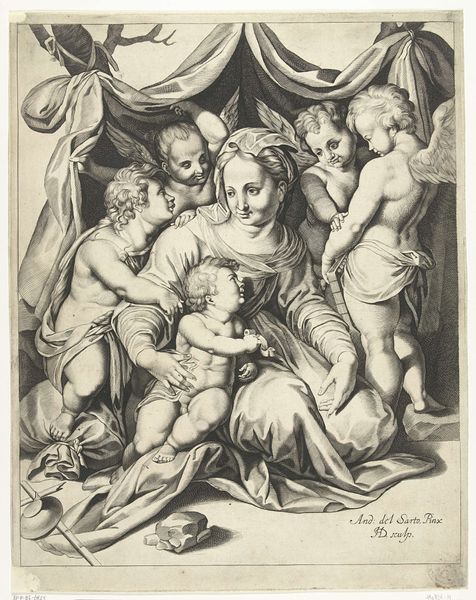
print, engraving
#
portrait
# print
#
figuration
#
italian-renaissance
#
engraving
Dimensions: height 144 mm, width 102 mm
Copyright: Rijks Museum: Open Domain
Curator: "Madonna met Kind," an engraving likely produced between 1488 and 1585. The piece now resides here at the Rijksmuseum. Editor: It possesses a striking serenity. The subtle hatching creates depth and gives the figures a tangible presence on what feels like a very still, somber scene. Curator: Indeed. Observe the precise linearity of the engraving. Notice how the engraver manipulates line weight to define form and texture, paying particular attention to the drapery’s elaborate folds that enshroud Mary. Editor: Speaking of drapery, I’m really drawn to that specific textile; it’s used here not just as adornment, but to structure the overall composition, too. The density of the engraving marks speaks of serious labor and perhaps the patronage driving such detailed production. Curator: Absolutely, one can decode much here through Renaissance art theory. For instance, the Virgin's lowered gaze evokes modesty, a highly prized virtue, whilst the child clutching the fabric could be interpreted as an invocation of innocence, as he looks curiously up at Mary. The very formal elements communicate established meanings, reflecting contemporary expectations. Editor: And those elements probably speak to the consumption of similar devotional works. How many engravings were needed to make that many prints to serve its function, I wonder. Considering that distribution network contextualizes the image far beyond its immediate iconography. Also that specific sort of paper the print exists on speaks of deliberate craft traditions informing this specific print's manufacture and distribution. Curator: Interesting. Do you believe then, that such emphasis on its material properties eclipses any formal artistic intent or significance? Editor: Not necessarily eclipses, but certainly enriches. Looking at the image through production gives me access to networks of labor otherwise hidden when fixated on aesthetics alone. Curator: That offers a fascinating parallel viewpoint, prompting consideration of socio-economic realities ingrained even within sacred portrayals. Editor: Yes, recognizing the confluence between labor, materials, and cultural narratives, while allowing formal composition to deepen meaning and extend toward more worldly spheres.
Comments
No comments
Be the first to comment and join the conversation on the ultimate creative platform.

